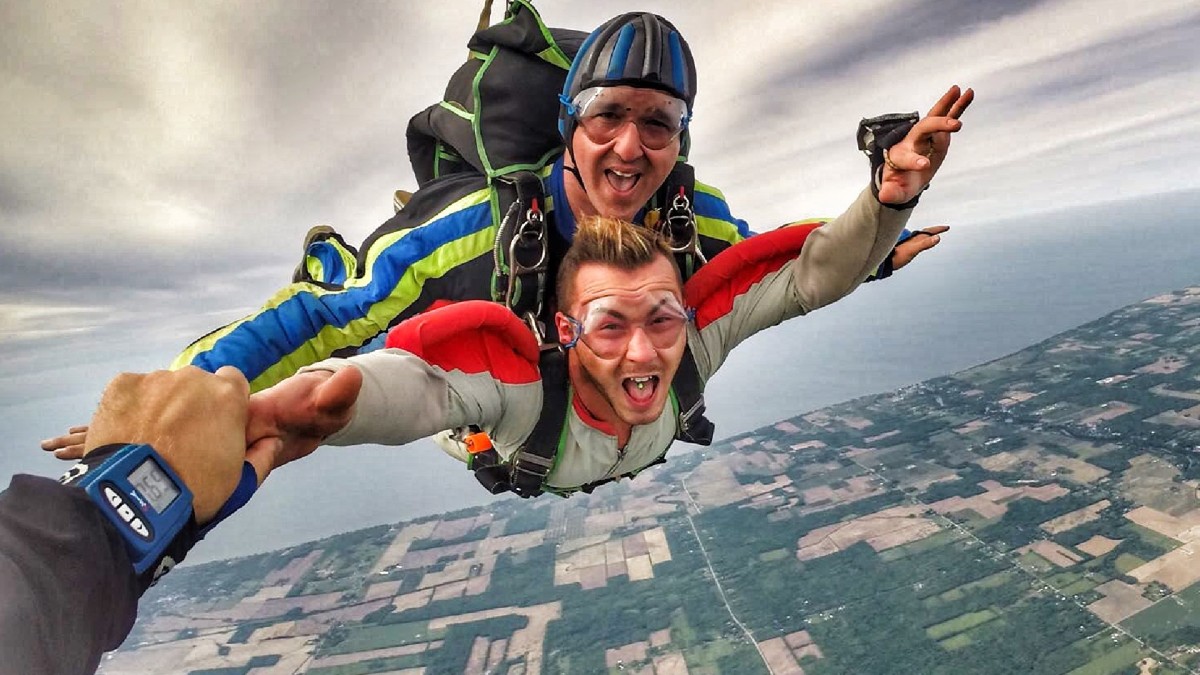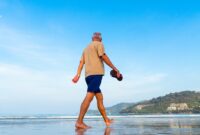Adventures for Seniors: Embark on a journey of exploration and discovery, tailored to the active spirit and unique needs of older adults. This guide delves into a variety of exciting experiences, from gentle strolls to more challenging expeditions, all designed to promote physical well-being, mental stimulation, and social connection. We’ll explore planning, safety, accessibility, and the immense benefits of embracing adventure in later life.
Whether you’re seeking a relaxing cruise, a invigorating hike, or a leisurely cycling tour, this resource provides comprehensive information and practical tips to help you plan unforgettable adventures that cater to your specific abilities and interests. Discover how to overcome potential challenges, maximize your enjoyment, and create lasting memories while prioritizing your health and safety.
Types of Adventures
Choosing the right adventure is key to a fulfilling and enriching experience for seniors. The options are vast, and considering individual physical capabilities and interests is paramount. This section outlines various adventure types categorized by activity level, providing descriptions, suggested locations, and highlighting the associated benefits.
Adventure Types Categorized by Activity Level
The following table categorizes ten diverse adventure types suitable for seniors based on their activity level: low, medium, and high. The activity level is a general guideline and should be adjusted based on individual fitness and health conditions. Always consult with a physician before embarking on any new physical activity.
| Adventure Type | Activity Level | Description | Suggested Locations |
|---|---|---|---|
| Gentle Walking Tour | Low | Explore a city or scenic area at a leisurely pace, focusing on historical sites or natural beauty. | Charleston, South Carolina; Sedona, Arizona; coastal towns in Maine. |
| Botanical Garden Visit | Low | Enjoy the tranquility and beauty of diverse plant life. Many gardens offer benches and shaded areas for rest. | Royal Botanic Gardens, Kew (UK); New York Botanical Garden; Longwood Gardens (Pennsylvania). |
| Museum Hopping | Low | Explore art, history, or science museums at your own pace, taking breaks as needed. | The Louvre (Paris); The Metropolitan Museum of Art (New York); The British Museum (London). |
| Scenic Train Journey | Low | Relax and enjoy breathtaking views from the comfort of a train. | Rocky Mountaineer (Canada); Glacier Express (Switzerland); The California Zephyr (USA). |
| Kayaking (calm waters) | Medium | Enjoy a gentle paddle on a calm lake or river. Choose a stable kayak and consider a guided tour. | Flathead Lake (Montana); Lake Tahoe (California/Nevada); The Chesapeake Bay (Maryland/Virginia). |
| Cycling (on paved paths) | Medium | Explore scenic routes on paved bike paths, choosing shorter distances and flatter terrain. Use an e-bike for assistance if needed. | The C&O Canal Towpath (Maryland/West Virginia); The Katy Trail (Missouri); The Minuteman Bikeway (Massachusetts). |
| Whale Watching Tour | Medium | Enjoy a boat trip to observe whales in their natural habitat. Many tours offer comfortable seating and amenities. | Monterey Bay (California); Provincetown (Massachusetts); Húsavík (Iceland). |
| Hot Air Balloon Ride | Medium | Experience stunning aerial views in a comfortable hot air balloon. Choose a reputable operator with a good safety record. | Cappadocia (Turkey); Napa Valley (California); Albuquerque (New Mexico). |
| Hiking (easy trails) | High | Enjoy nature on well-maintained, easy hiking trails. Choose shorter trails with minimal elevation gain. | Acadia National Park (Maine); Grand Canyon National Park (Arizona) (South Rim trails); Yosemite National Park (California) (easy valley trails). |
| Light Rock Climbing (with guide) | High | Experience the thrill of rock climbing with a qualified guide on beginner-friendly routes. | Red Rock Canyon National Conservation Area (Nevada); Joshua Tree National Park (California); New River Gorge National Park and Preserve (West Virginia). |
Benefits of Adventure Activities for Seniors
Engaging in adventure activities offers numerous benefits for seniors, encompassing physical, mental, and social well-being.
Physical benefits include improved cardiovascular health, increased strength and flexibility, and better balance and coordination. For example, gentle walking tours improve cardiovascular fitness, while kayaking builds upper body strength.
Mental benefits include reduced stress and anxiety, improved cognitive function, and a boosted sense of accomplishment. The challenge and novelty of a hot air balloon ride, for instance, can stimulate the mind and provide a sense of exhilaration.
Social benefits include opportunities for connection and socialization, fostering a sense of community and belonging. Joining a group for a scenic train journey or museum visit can lead to new friendships and shared experiences.
Planning & Preparation
Embarking on an adventure, regardless of age, requires careful planning. For seniors, this is even more crucial, ensuring a safe and enjoyable experience. Thorough preparation minimizes potential risks and maximizes the chances of creating lasting positive memories. This section details the essential steps for planning a senior-friendly adventure.
Planning a senior adventure involves several key considerations beyond typical trip planning. Safety and accessibility must be prioritized at every stage, from choosing the destination to packing the right gear. A well-defined budget and a realistic itinerary are also vital for a successful and stress-free journey.
Safety Considerations and Accessibility
Prioritizing safety and accessibility is paramount when planning adventures for seniors. This includes assessing the physical demands of the chosen activity and destination, ensuring the environment is suitable for the senior’s physical capabilities and any pre-existing health conditions. Choosing destinations with readily available medical services is also crucial. For example, a multi-day hike in a remote area might be unsuitable for someone with mobility issues, whereas a guided walking tour in a city with accessible transportation would be a more appropriate option. Consider travel insurance that covers medical emergencies and trip cancellations. Always inform someone of your itinerary and expected return time.
Essential Packing Checklist
Careful packing is crucial for a comfortable and safe adventure. The specific items will vary depending on the type of adventure, but the following checklist provides a good starting point.
- Medication and First-Aid Kit: Include all prescription medications, a detailed medication list, and a well-stocked first-aid kit containing bandages, antiseptic wipes, pain relievers, and any other necessary supplies specific to individual needs.
- Comfortable Clothing and Footwear: Pack layers of clothing suitable for varying weather conditions, including moisture-wicking materials. Comfortable, supportive shoes appropriate for the planned activities are essential. Consider bringing extra socks.
- Personal Care Items: Include toiletries, sunscreen, insect repellent, and any other personal care items necessary.
- Documents and Identification: Carry copies of important documents, including identification, travel insurance information, and medical information. Consider storing these digitally as well as physically.
- Communication Devices: A fully charged mobile phone and a portable charger are essential for staying connected. Consider a satellite communication device for remote areas with limited cell service.
- Walking Aids and Mobility Devices: If needed, pack any necessary walking aids such as canes or walkers. Ensure these are lightweight and easy to transport.
- Other Items (depending on adventure type): This could include binoculars for wildlife viewing, a hat and sunglasses for sun protection, a water bottle or hydration pack, a small backpack for day trips, and any other specialized equipment relevant to the chosen activity.
Budgeting and Financial Management
Careful budgeting is crucial for ensuring a financially responsible adventure. Start by estimating the total cost of the trip, including transportation, accommodation, activities, food, and incidentals. Consider using budgeting apps or spreadsheets to track expenses. Explore senior discounts and travel deals to save money. For example, many museums and attractions offer discounted admission for seniors, and some airlines and hotels provide senior-specific discounts. It’s wise to have a contingency fund for unexpected expenses, such as medical emergencies or trip cancellations. Utilizing travel reward programs or credit cards with travel benefits can also contribute to cost savings.
Accessibility & Inclusivity
Planning adventures for seniors requires careful consideration of accessibility to ensure everyone can participate and enjoy the experience. Failing to account for varying physical abilities can exclude individuals and diminish the overall enjoyment of the trip. Inclusivity means creating an environment where all participants feel welcome, respected, and valued regardless of their abilities.
Accessibility in adventure planning for seniors encompasses a wide range of considerations, from the physical environment to the design of activities and the provision of support services. This includes factors such as the availability of accessible transportation, accommodation with appropriate amenities (e.g., ramps, grab bars, wider doorways), and the selection of activities that can be modified to accommodate different levels of physical ability. It also involves providing clear and accessible information about the adventure, including detailed descriptions of the terrain, potential challenges, and available support services.
Resources Supporting Accessible Travel and Adventure for Seniors
Several organizations and resources exist to assist seniors in planning accessible adventures. These resources can provide valuable information, support services, and specialized equipment.
- Accessible Travel Agencies: Many travel agencies specialize in arranging accessible trips, catering to the needs of individuals with disabilities. They can help find accessible accommodations, transportation, and activities. These agencies often have staff trained to understand the specific needs of older adults and can provide personalized support.
- National and International Disability Organizations: Organizations such as the National Disability Rights Network (NDRN) in the United States, or similar organizations in other countries, offer resources and information on accessible travel options and advocate for the rights of people with disabilities.
- Online Resources and Forums: Websites and online forums dedicated to accessible travel provide valuable information, tips, and reviews from individuals with disabilities who have firsthand experience planning and undertaking accessible adventures. These can offer practical insights and advice.
Adaptive Equipment and Modifications for Enhanced Senior Participation
Appropriate adaptive equipment and modifications can significantly enhance the ability of seniors with varying physical abilities to participate in adventures. These adjustments should be carefully considered based on individual needs and the specific adventure planned.
- Mobility Aids: Walkers, canes, wheelchairs, and other mobility aids can be essential for seniors with limited mobility. Choosing lightweight and maneuverable options is crucial for outdoor adventures. Consider terrain suitability when selecting mobility aids; all-terrain wheelchairs, for example, are designed for rougher surfaces.
- Assistive Listening Devices: For seniors with hearing impairments, assistive listening devices can enhance communication and participation in group activities. These can range from simple hearing amplifiers to more sophisticated systems.
- Adaptive Clothing and Footwear: Appropriate clothing and footwear can improve comfort and safety. This includes clothing with easy closures, non-slip footwear with good ankle support, and moisture-wicking fabrics for comfort in varying weather conditions.
- Modified Activities: Some activities might need modification to accommodate different levels of physical ability. For example, a long hike might be adapted to a shorter walk, or a challenging kayaking trip might be replaced with a gentler boat ride.
Health & Safety Considerations
Embarking on adventures in later life offers incredible rewards, but prioritizing health and safety is paramount. Understanding potential risks and implementing preventative measures ensures a fulfilling and secure experience. This section details key considerations for maintaining well-being during senior adventures.
Potential Health Risks and Mitigation Strategies
Various adventure activities present unique health risks for seniors. For instance, hiking might lead to falls or dehydration, while water-based activities increase the risk of hypothermia or drowning. Crucially, pre-existing conditions like heart disease, arthritis, or respiratory issues can be exacerbated by strenuous activities. Mitigation strategies involve careful activity selection, thorough preparation, and consistent monitoring of one’s physical state. Choosing less strenuous activities, staying well-hydrated, and taking frequent breaks are crucial. For those with pre-existing conditions, consulting a physician beforehand is essential to assess suitability and obtain necessary medical advice. Packing a well-stocked first-aid kit, including any personal medications, is also vital. For example, a senior with arthritis might choose gentle cycling instead of a challenging mountain hike, and always carry pain relief medication. Someone with a heart condition might opt for a guided, less strenuous walking tour instead of a multi-day backpacking trip.
Appropriate Accommodations and Transportation
Choosing suitable accommodations and transportation is vital for a comfortable and safe adventure. Accommodations should be accessible, with features like ramps, elevators, and grab bars in bathrooms. Transportation options should be comfortable and safe, minimizing potential strain. For example, instead of relying on public transport, consider pre-booked private transfers or accessible taxis, especially if mobility is a concern. Consider the accessibility of the chosen accommodation. Does it offer single-level access, grab bars in the bathroom, and appropriate bed height? For transportation, explore options like wheelchair-accessible vehicles or private car services that cater to seniors’ needs.
Communicating with Medical Professionals
Effective communication with medical professionals before, during, and after an adventure is crucial. Before the trip, schedule a checkup to discuss potential risks and obtain necessary medical clearance. Discuss any pre-existing conditions and medications, and obtain a comprehensive list of emergency contacts. During the adventure, maintain regular contact with a designated contact person who can relay any health concerns to medical professionals. After the trip, schedule a follow-up appointment to discuss any health issues that may have arisen. It’s advisable to carry a detailed medical history, including medication lists and emergency contact information, at all times. This information should be readily available to emergency responders if needed. Regularly checking in with a family member or friend during the adventure also provides an extra layer of safety and allows for prompt intervention if needed.
Wrap-Up
Embracing adventure in later life offers unparalleled opportunities for personal growth, social enrichment, and lasting memories. By carefully planning, prioritizing safety and accessibility, and fostering a sense of community, seniors can engage in thrilling experiences that enhance their well-being and quality of life. Remember to consult with your physician before embarking on any new adventure, and choose activities that match your physical capabilities and preferences. The journey awaits – make it a memorable one!



